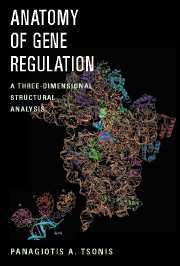Book contents
- Frontmatter
- Contents
- Preface
- 1 A General Introduction to 3-D Structures
- 2 The Higher Organization of the Genome
- 3 Structure of DNA and Telomeres
- 4 DNA Replication
- 5 Transcription in Prokaryotes
- 6 Transcription in Eukaryotes
- 7 Splicing
- 8 Modifications of mRNA
- 9 Compartmentalization of Transcription
- 10 Protein Synthesis
- 11 The Birth and Death of Proteins
- Further Reading and References
- Index
4 - DNA Replication
Published online by Cambridge University Press: 24 May 2010
- Frontmatter
- Contents
- Preface
- 1 A General Introduction to 3-D Structures
- 2 The Higher Organization of the Genome
- 3 Structure of DNA and Telomeres
- 4 DNA Replication
- 5 Transcription in Prokaryotes
- 6 Transcription in Eukaryotes
- 7 Splicing
- 8 Modifications of mRNA
- 9 Compartmentalization of Transcription
- 10 Protein Synthesis
- 11 The Birth and Death of Proteins
- Further Reading and References
- Index
Summary
PRIMER DNA replication involves many proteins acting at different steps. DNA polymerases are the main enzymes needed to create new strands from the parental ones. However, DNA polymerase alone cannot complete the whole task of replication. When the double-stranded DNA melts at the origin of replication to expose the single strands to the polymerizing enzyme, the fork must continue to unwind until the termination signals have been reached. This part in replication is performed by helicases, and the topology ahead of the fork (mainly coiling and superwinding of the DNA) is controlled by topoisomerases. Finally, termination is achieved by the interaction of both helicases and termination proteins. Editing is another important function during replication to ensure that misincorporations are eliminated and, thus, mutations are avoided. Also, other proteins are involved in securing the processivity of DNA polymerase and the processing of the Okazaki fragments. The 3-D structure of all the major players participating in the entire process of replication is for the most part known. For some of them, we also know how they interact with each other or with DNA. This enables us to visualize replication in a 3-D journey. This chapter introduces the 3-D structure of DNA polymerases, the mechanism of incorporation of the incoming nucleotide, and how DNA polymerase interacts with DNA and other proteins to achieve processivity and editing. We then examine the structure of different helicases, their interaction with DNA, and the mechanism of unwinding as suggested by the 3-D structures.
- Type
- Chapter
- Information
- Anatomy of Gene RegulationA Three-dimensional Structural Analysis, pp. 26 - 72Publisher: Cambridge University PressPrint publication year: 2003

